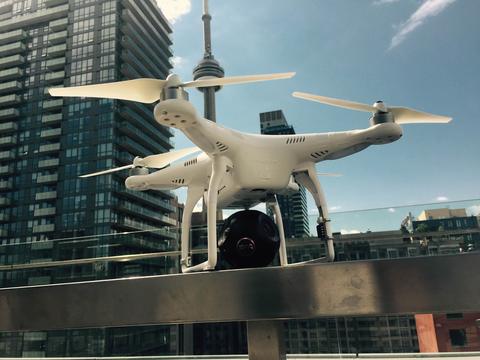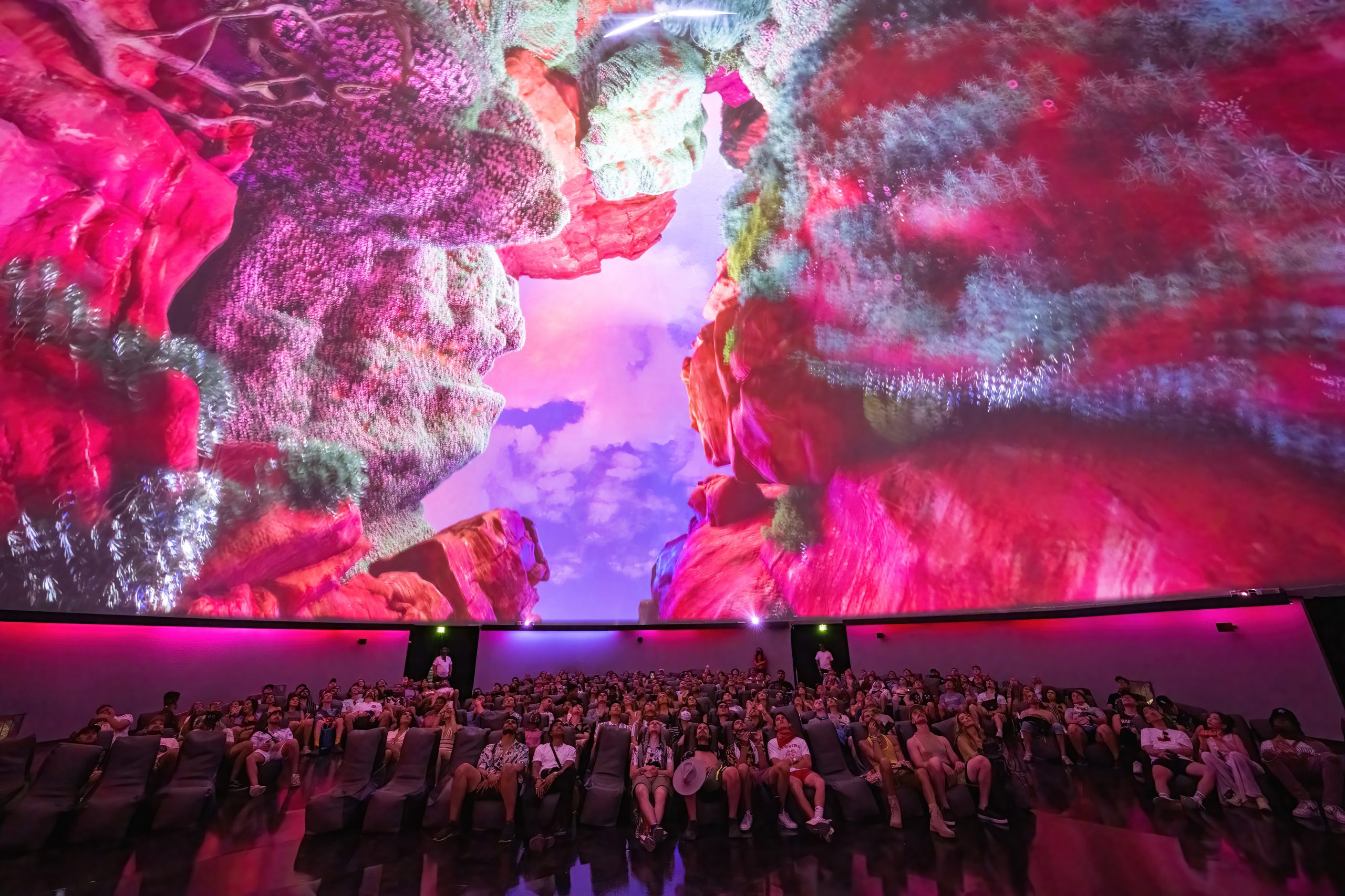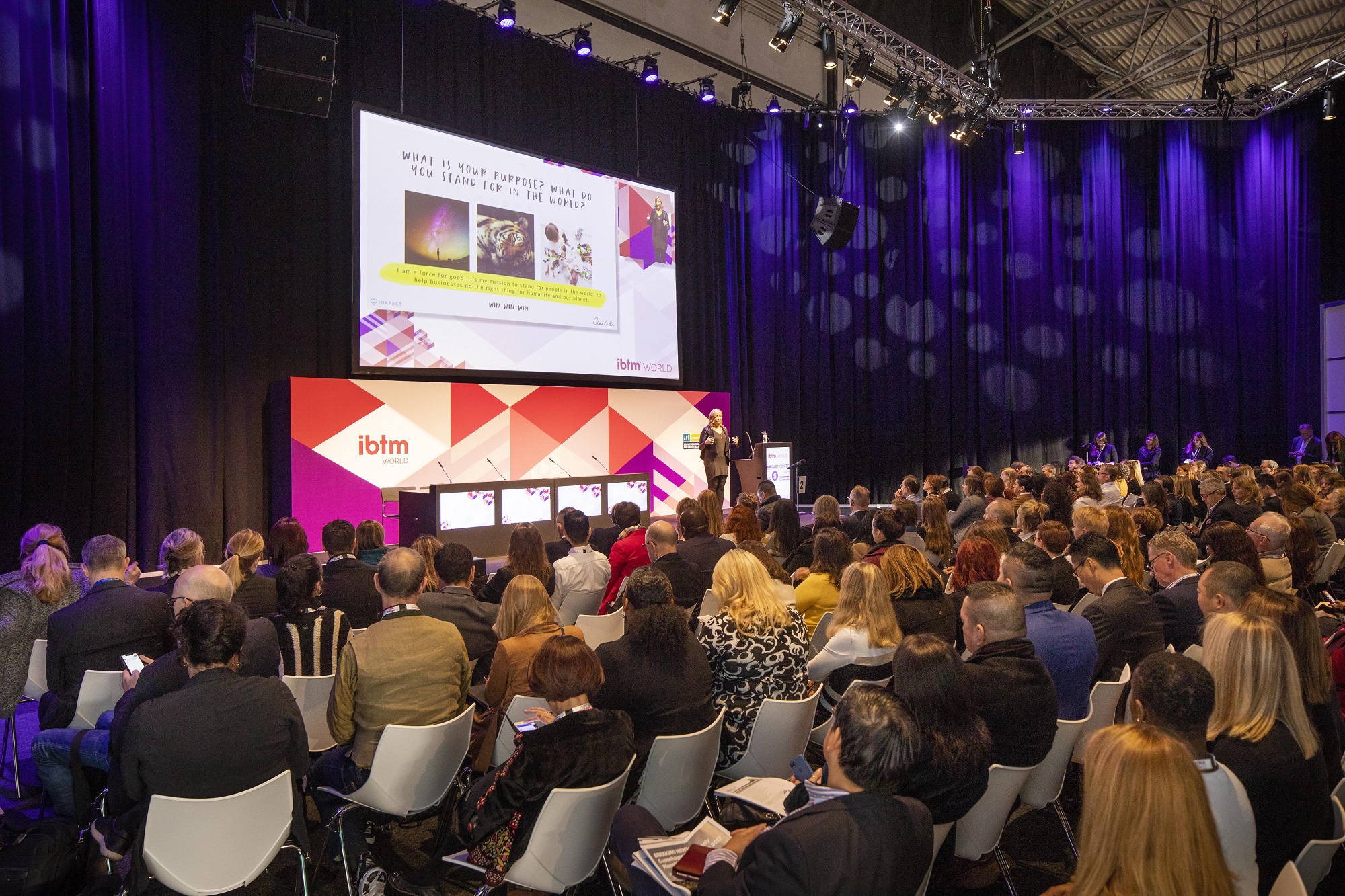Many readers will remember a time when they visited a meeting, conference, exhibition or any other corporate event, heard a speaker, saw some interesting things and left. Today, things are a little different.
 In a competitive business world, every part of a corporate event needs to have a wow factor; it needs to be engaging, and delegates should always leave not alone, but with a wealth of new thoughts buzzing around their heads.
In a competitive business world, every part of a corporate event needs to have a wow factor; it needs to be engaging, and delegates should always leave not alone, but with a wealth of new thoughts buzzing around their heads.
It’s led to a very real evolution in the MICE sector driven by a need to stand out and include as many delegates as possible in the most engaging way possible. For this very reason, video has become a widely used weapon in any event planner’s arsenal.
Using video for events
The brain can process visual information around 60,000 times quicker than text, research shows. Our cerebrum prioritises this method of learning, meaning 90 per cent of all information we process is visual.
Research collected by Lyf Marketing shows that the average human attention span has fallen to only eight seconds, which somewhat explains the rise in engaging, easy-to-digest video content.

Shutterstock says that the majority of people in the US watch around 397 online videos every month, and as much as 60 per cent of all data on the planet is in video format.
If you’re relying on text or speech alone to get your brand’s message across, you’re behind the times. However, simple video-users might also find themselves slipping if they don’t keep up with the latest trends – especially the types that can drive audience engagement further.
Event production is all about that ‘wow factor’, and with more people using basic video, the overall effect of it is being diluted. Enter 360-degree video, a new technology and one that you might already be familiar with.
One of the most limiting things about a standard video is that you’re trapped in a frame. If you’ve ever wondered what’s going on out of shot, a 360-degree camera is one way to take a peak.
Videos from fighter jets, exhibitions, music events and even a 360-degree, David Attenborough-narrated digital realisation of the world’s biggest dinosaur have all landed on social media in the last few months.

The cameras themselves are made of various lenses, which capture the event from all angles, giving viewers an interactive experience – importantly, they choose where to look.
It could be an incredible way to improve engagement for virtual event attendees, further breaking the barriers that physical location throws up.
Imagine live streaming your event, giving people the opportunity to either swipe their screen to look around or use their mobile device’s tilt controls to change their point of view. It certainly has the charm and novelty that businesses need if they’re to stand out from the crowd and engage their audience (wherever they are) on a new level.
Check out this video demo of the Bubl alpha tablet app showcases. The videos were shot with prototype Bublcam – the world's first spherical camera, say the developers.
How else could it be used?
The potential of 360-degree video is not only about getting more people to virtually attend an event, it can be a great tool for actual attendees, too.
When you watch many of these videos, you control which direction you are looking by moving your mobile device. Hold your screen in front of you and look up to rotate the view vertically, down to see what’s going on below you, or in any other direction you choose.
The next big thing
Body-mounted cameras like GoPro took the world by storm a few years ago, and when posing themselves the question of whether 360-degree video is the next big thing, PC Magazine gave many reasons why the answer could be yes.
Plenty of suppliers are crafting these cameras and making them publicly available, driving competition and pushing down prices. One model the magazine reviewed, 360fly, is compatible with any GoPro mount, is waterproof up to 30 metres and costs a rather reasonable US$399 (around AU$530, £280 or €360).
The trick then will be finding the right content that event delegates want to engage with. But that’s been the challenge in corporate events for some time.
With innovations like this, backed by the surge in popularity for Oculus Rift and other forms of virtual reality, video is evolving, and driving a similar change in the world of business events.
Carly Lewis is general manager of cievents Hong Kong. This article previously appeared on cievents' Event Management News blog


